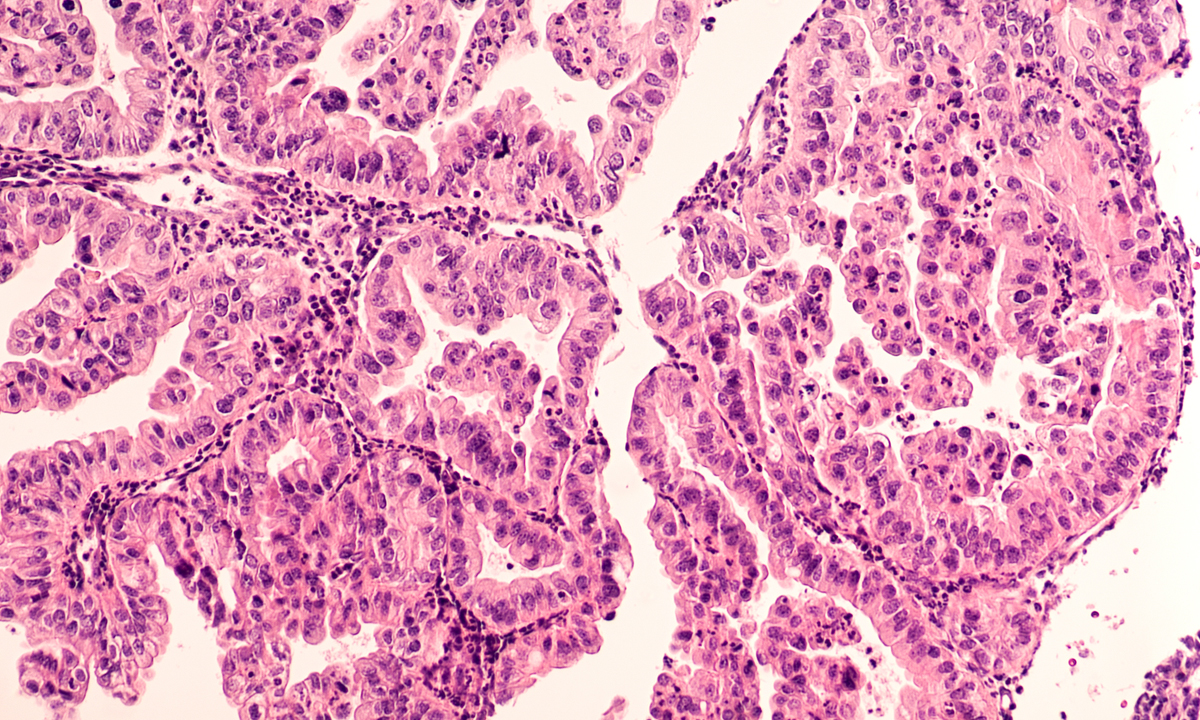
The words still echo in Catherine Stephen's mind: 'There's nothing wrong with you. Just exercise more.'
At 29, with a tumour the size of her head growing inside her abdomen, three different doctors dismissed her concerns before anyone took her seriously enough to order an ultrasound.
Catherine's story isn't just a personal triumph over adversity—it's a stark reminder of a healthcare crisis that continues to affect Australian women today.
In 2025, more than 1,800 Australian women will be diagnosed with ovarian cancer, and nearly 1,100 could lose their lives to the disease.
A tumour hiding in plain sight
What started as unexplained weight gain quickly escalated to bloating and back pain. Yet, multiple doctors waved away Catherine's concerns with the familiar refrain that many women hear: ' Exercise more, eat less; it's probably stress. '
'I had to see three different doctors before anyone would actually take me seriously,' Catherine recalls. If that third doctor hadn't listened, she probably wouldn't be alive today.
The ultrasound revealed the shocking truth—a massive tumour filling her abdominal cavity. Her oncologist in Newcastle was so concerned about rupture risk that he was reluctant to let her return home to prepare for surgery.
Within weeks, Catherine faced the devastating diagnosis: ovarian cancer. Specifically, a rare stage 2 Granulosa Cell Tumour that had been silently growing, despite doctors suggesting otherwise.
Medical dismissal: A silent epidemic[/h3]
Catherine's experience reflects a troubling pattern in women's healthcare.
The University of Melbourne recently determined that 64% of women incorrectly believed a pap smear detects ovarian cancer, and more than 70 per cent of Australians don't know or incorrectly assume that the Human Papilloma Virus Vaccine (HPV) protects against ovarian cancer.
This knowledge gap, combined with healthcare providers who may not recognise the subtle early symptoms of ovarian cancer, creates a dangerous perfect storm.
If a woman is diagnosed at Stage 1, while the cancer is localised, her survival rates are over 90 per cent. However, approximately 70% of all ovarian cancer cases in Australia are diagnosed in Stages 3 or 4, contributing to the low overall survival rate.
Know the symptoms of ovarian cancer
- Persistent abdominal bloating or pain
- Feeling full quickly when eating
- Changes in bowel or bladder habits
- Unexplained fatigue
- Back pain
- Unusual bleeding
The regional healthcare challenge
Catherine's journey from her home in Armidale to Newcastle—more than four hours each way—highlights another critical issue facing Australian women, particularly those in rural and regional areas.
'The sheer amount of time and money it took to get from my regional home to a hospital capable of providing the support I needed was astronomical,' Catherine explains.
This wasn't just about the nine-hour round trips for treatment; it was about accessing the specialist care that could mean the difference between life and death.
Support services were practically non-existent in regional areas, especially for young women with ovarian cancer. 'There's no one who can identify with your experience, and it can be quite lonely going through all that on your own,' she says.
A decade of healing and advocacy
Though Catherine was declared cancer-free early in her journey, recovery took years. Additional surgeries, fertility challenges, and the constant fear of recurrence—which can be as high as 80 per cent for ovarian cancer—dominated her life.
It took about five years to feel physically and mentally well again, and a full decade before she felt ready to step into advocacy. Now, fifteen years later, she's become a powerful voice for change through campaigns like Frocktober.
Catherine's advocacy work with the Ovarian Cancer Research Foundation focuses on the critical need for increased research funding and the development of early detection methods.
There is currently no recommended screening test for ovarian cancer, even for high-risk individuals, as no existing test can accurately detect early-stage disease.
The Frocktober campaign she supports invites Australians to 'frock up' and raise money through sponsorship, donations, or events to fund research into early detection and better treatments.
But perhaps more importantly, Catherine's message resonates with women across Australia: 'If you think there's something wrong, advocate for yourself and don't stop until you're happy with the outcome.'
The road ahead
Ovarian cancer cases and deaths are predicted to increase in Australia by 42 per cent and 55 per cent, respectively, by 2040. This projection makes Catherine's advocacy work more urgent than ever.
Despite significant advancements in cancer treatment, progress in ovarian cancer survival has significantly stalled. While the overall five-year survival rate across all types of cancer has climbed to 72.7 per cent, ovarian cancer survival remains as dire as it was in 1975.
However, there's hope on the horizon. Research into molecular profiling, precision medicine, and expanded access to clinical trials shows promise for improving outcomes.
If Catherine's story sounds familiar—if you've been dismissed by healthcare providers or told your symptoms aren't serious—you're not alone. Her experience represents thousands of Australian women who've faced similar dismissals.
'Younger women sometimes they're brushed aside because they are considered to be fitter and healthier, but don't give up until you're satisfied with the answers that you get,' Catherine urges.
For our readers over 60, this advice is equally crucial. While ovarian cancer can affect women of any age, the symptoms might be dismissed as 'normal ageing' when they could signal something more serious.
Catherine's story is ultimately one of triumph—not just over cancer, but over a healthcare system that initially failed to listen. Her persistence saved her life, and her advocacy continues to save others.
What health questions have you been putting off asking? Have you or someone you know experienced medical dismissal? Share your experiences and your thoughts about this story in the comments below.
Primary source
Australia’s Deadliest Women’s Cancer: Why Women Need Urgent Action Now—ANZGOG
Cited text: 'In 2025, more than 1,800 Australian women will be diagnosed with ovarian cancer, and nearly 1,100 will lose their lives to the disease.'
Excerpt: In 2025, more than 1,800 Australian women will be diagnosed with ovarian cancer, and nearly 1,100 could lose their lives to the disease.

Australia’s Deadliest Women’s Cancer: Why Women Need Urgent Action Now - ANZGOG
Ovarian cancer is now confirmed as the deadliest women’s cancer, with the latest statistics revealing a five-year survival rate of just 49%. Tragically, two-thirds (67%) of cases are diagnosed at an advanced stage, where survival drops to just 29%1. [...] www.anzgog.org.au
www.anzgog.org.au
Ovarian Cancer Statistics: Survival Rate, Age, Risk Factors | ACRF
Cited text: 'The University of Melbourne recently determined that 64% of women incorrectly believed a pap smear detects ovarian cancer, and more than 70% of Austra...'
Excerpt: The University of Melbourne recently determined that 64% of women incorrectly believed a pap smear detects ovarian cancer, and more than 70 per cent of Australians don't know or incorrectly assume that the Human Papilloma Virus Vaccine (HPV) protects against ovarian cancer.
News
Explore ACRF news and media releases to learn about recent developments in cancer research and our ongoing impact. www.acrf.com.au
www.acrf.com.au
Screening and prevention of ovarian cancer | The Medical Journal of Australia
Cited text: 'Ovarian cancer cases and deaths are predicted to increase in Australia by 42% and 55% respectively by 2040.'
Excerpt: Ovarian cancer cases and deaths are predicted to increase in Australia by 42 per cent and 55 per cent, respectively, by 2040.

Screening and prevention of ovarian cancer
Despite advances in treatment, ovarian cancer remains a lethal disease which lacks an established screening program, and surgical prevention remains the gold standard for women at increased riskwww.mja.com.au







